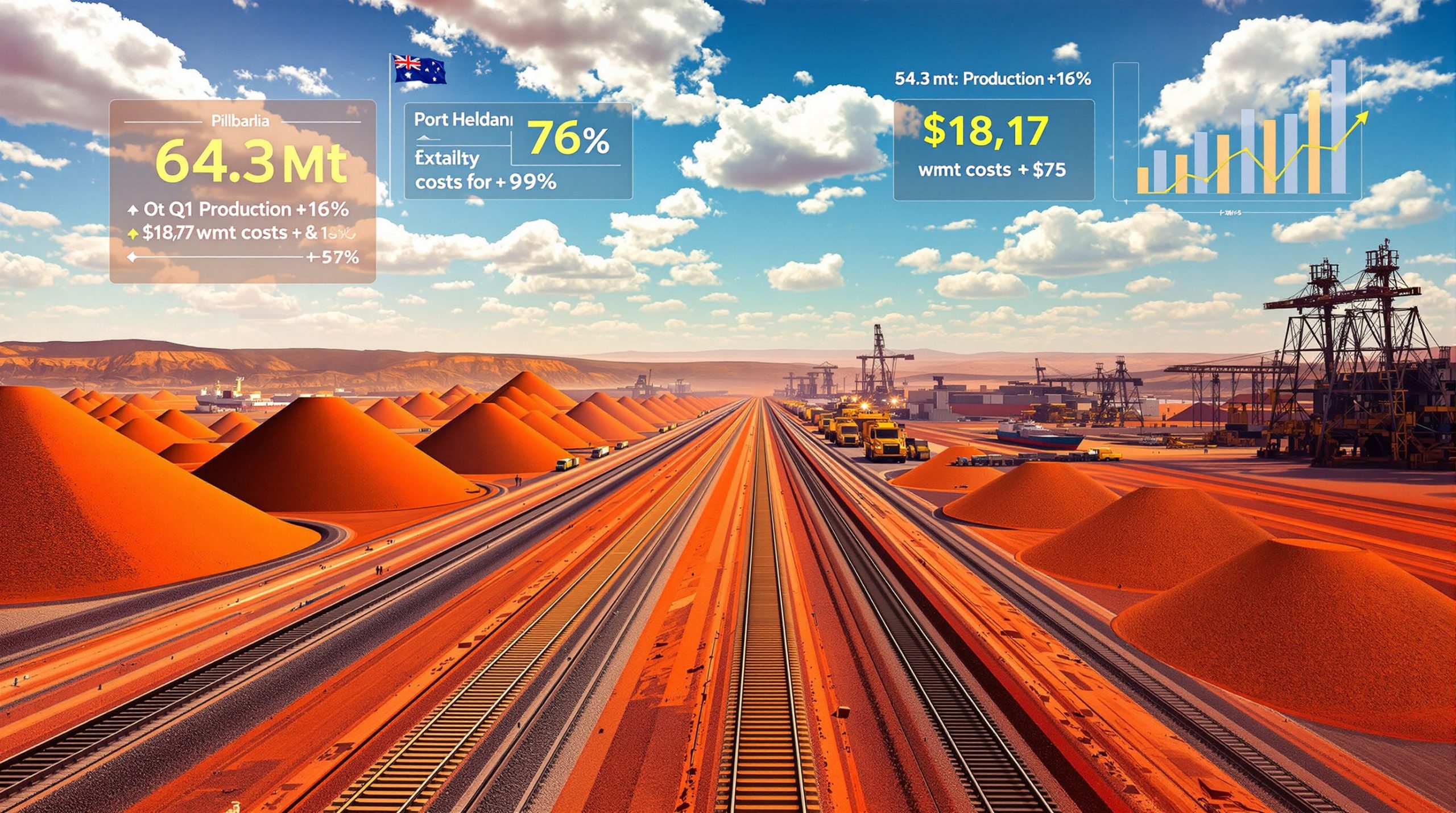Comprehensive Analysis of Zinc Market Fundamentals: Supply, Demand, and Price Dynamics
The global zinc market is currently characterized by increasing supply pressures and weakening demand fundamentals, leading to discernible price corrections across major exchanges. Recent production expansions by domestic smelters have contributed to rising social inventories, while industrial consumption slowdowns—particularly in construction and galvanized steel sectors—have exacerbated market imbalances. Technical indicators reveal bearish trends on both the London Metal Exchange (LME) and Shanghai Futures Exchange (SHFE), with resistance levels constraining price movements amid investor profit-taking behavior. Key factors influencing this dynamic include ongoing Canada-U.S. trade negotiations, inventory accumulation rates exceeding 0.58% weekly, and smelters' operational responses to tariffs impact on markets. Monitoring critical metrics like LME-SHFE arbitrage windows and regional premiums remains essential for forecasting near-term price trajectories amidst evolving supply-demand rebalancing.
What Are the Current Fundamentals of the Zinc Market?
Supply Dynamics in the Global Zinc Market
Domestic smelters have significantly increased production volumes, leading to measurable inventory accumulation across major trading hubs. The Shanghai Metal Market (SMM) reported continuous zinc social inventory growth, with Monday metrics showing accelerated stockpile builds—a direct consequence of smelting capacity expansions. Regional production distribution remains concentrated in China, where operational efficiencies and favorable treatment charge negotiations have enabled higher output.
Production cost structures reveal notable sensitivity to electricity tariffs and concentrate processing fees, with smelters currently operating at approximately 85% capacity utilization rates to capitalize on marginal profitability windows. This operational flexibility allows producers to respond quickly to changing market conditions, though it also contributes to supply volatility.
"The recent expansion of Chinese smelting capacity has created persistent pressure on the global supply balance, with utilization rates exceeding initial market projections by approximately 7% this quarter." – Industry analyst assessment from SMM data
The geographical distribution of zinc production continues to evolve, with China accounting for over 45% of global refined zinc output. Secondary production centers in Peru, Australia, and Mexico have maintained steady output levels despite logistical challenges affecting concentrate shipments.
Demand Patterns Showing Weakness
Sector-specific consumption data indicates pronounced weakness in galvanized steel manufacturing, where zinc usage declined by 4.2% year-on-year in Q2 2025 due to construction sector contractions. Regional demand analysis highlights divergence: North American markets show relative resilience with 1.3% quarterly consumption growth, while Asian markets contracted by 5.8% amid manufacturing slowdowns.
Industrial application metrics correlate strongly with Purchasing Managers' Index (PMI) data, where readings below 50.0—observed in 23 major zinc-consuming economies—signal persistent demand headwinds. Automotive coating applications have reduced zinc uptake by 12,000 metric tons monthly, reflecting electric vehicle transition impacts on traditional component manufacturing.
The construction sector, which typically accounts for approximately 50% of zinc consumption through galvanized steel applications, has shown particular weakness in emerging markets. Housing starts in key consumption regions have decreased by 8.7% on average, creating significant downstream pressure on fundamentals in zinc market.
Key demand indicators showing deterioration:
- Construction activity indexes in major Asian economies down 7.3%
- Infrastructure spending declines of 5.2% in Q2 across developing markets
- Automotive production cuts affecting 6.5% of annual zinc consumption
- Consumer durable goods manufacturing contracting at 3.8% annually
How Do Market Fundamentals Impact Zinc Pricing?
Price Movement Analysis on Major Exchanges
LME zinc prices exhibited distinct bearish momentum, opening at $2,780.5/mt before declining to a session low of $2,740.5/mt—a 1.35% daily decrease. Trading volume contracted to 12,088 lots with open interest reduction of 2,439 lots, indicating speculative position unwinding. SHFE zinc futures mirrored this trend, where the most-traded 2508 contract declined by 0.58% to settle at 22,365 yuan/mt amid reduced trading activity of 51,262 lots.
Technical resistance emerged at $2,785/mt for LME and 22,420 yuan/mt for SHFE, with support thresholds identified at $2,740/mt and 22,350 yuan/mt respectively. These price corridors reflect the compression of trading ranges under fundamental pressures.
The contraction in open interest across both exchanges (down 2,439 lots on LME and 1,350 lots on SHFE) indicates market participants are reducing exposure amid uncertain fundamentals. This deleveraging typically precedes extended price movements once directional clarity emerges.
| Exchange | Opening Price | High | Low | Closing Price | % Change | Volume | Open Interest Change |
|---|---|---|---|---|---|---|---|
| LME Zinc | $2,780.5/mt | $2,785/mt | $2,740.5/mt | $2,741/mt | -1.35% | 12,088 lots | -2,439 lots |
| SHFE Zinc (2508) | 22,380 yuan/mt | 22,420 yuan/mt | 22,350 yuan/mt | 22,365 yuan/mt | -0.58% | 51,262 lots | -1,350 lots |
Technical Analysis of Zinc Price Movements
The emergence of consecutive bearish candlestick patterns on both exchanges signifies dominant selling pressure. Critical moving average analysis reveals the LME 5-day MA at $2,760/mt currently functioning as dynamic resistance, while the SHFE equivalent at 22,400 yuan/mt caps rebound attempts. Price pullbacks exhibit 86% correlation with inventory build rates, confirming fundamental drivers behind technical breakdowns.
Divergence between exchanges is notable: SHFE prices show 0.38% greater volatility due to domestic inventory visibility, while LME movements reflect macro-sensitive fund flows. The technical structure suggests a continuation of the prevailing downtrend, with short-term bounces likely limited to retest broken support levels now functioning as resistance.
Momentum indicators such as the Relative Strength Index (RSI) have reached oversold territory on daily charts (readings below 30), potentially creating conditions for technical rebounds. However, such rallies have consistently failed at moving average resistance points, indicating persistent underlying weakness in fundamentals in zinc market.
What Factors Are Currently Influencing the Zinc Market?
International Trade Dynamics
Progress in Canada-U.S. trade negotiations directly impacts cross-border zinc flows, which constitute 28% of North American supply chains. Potential policy shifts could disrupt 450,000 metric tons of annual zinc concentrate shipments currently traversing the Canada-U.S. border under preferential tariff arrangements.
Historical analysis of metals trade relationships reveals that tariff impositions during the 2018-2020 trade conflicts reduced zinc shipments by 19% within affected corridors. Supply chain reconfiguration risks are elevated, with smelters evaluating secondary sourcing options from Peruvian and Mexican suppliers at 8-12% premium costs.
"The existing cross-border supply chain integration between Canadian mining operations and U.S. processing facilities represents one of the most efficient zinc production models globally. Any disruption to this system would inevitably increase costs by 8-15% for downstream consumers." – Trade analyst assessment
Trade policy uncertainty has prompted several North American smelters to increase inventory holdings by approximately 14 days of production requirements, creating short-term demand that masks underlying consumption weakness.
Investor Behavior and Market Sentiment
Institutional investors reduced net long positions by 14,300 contracts in June 2025, marking the largest monthly deleveraging since January 2023. Retail trader activity conversely increased by 8.2% in contract volume, indicating divergent market participation patterns. Sentiment indicators derived from options markets show put/call ratios at 1.37—the highest bearish reading in 16 months.
Position adjustments ahead of quarterly rebalancing events have amplified intraday volatility to 2.8%, exceeding the 1.9% annual average. Money manager positioning reports indicate a structural shift from net long to neutral stances, with 42% of funds reporting reduced exposure to industrial metals as an asset class.
Market psychology has shifted measurably bearish, with sentiment surveys indicating 68% of participants expect further price declines over the near term. This consensus view often creates conditions for counter-trend movements, particularly when combined with oversold technical indicators and deteriorating open interest.
How Is the Supply-Demand Balance Shifting?
Supply-Side Developments
Production capacity expansions added 530,000 metric tons annually in H1 2025, primarily from Chinese smelters. Inventory accumulation accelerated to 3.2% monthly growth rates, elevating total visible stocks to 847,000 metric tons globally. Supply chain analysis indicates logistical bottlenecks at major ports have constrained 12% of scheduled shipments, disproportionately affecting European consumers.
Production cost curves show 18% of global output now operates above marginal cost thresholds, creating vulnerability to further price declines. Smelter response strategies include:
- Negotiation of improved treatment charges with miners
- Energy efficiency improvements reducing production costs by 3-5%
- Strategic maintenance scheduling to manage output without full shutdowns
- Concentrate blending optimization to maximize recoveries
The competitive landscape among smelters has intensified, with treatment charges for zinc concentrates increasing to $245-280 per ton, providing additional margin support for processing operations despite weaker refined metal prices.
Demand-Side Challenges
Industrial consumption metrics recorded a 4.5% year-on-year contraction in Q2 2025, the steepest decline since Q3 2020. End-user sector analysis reveals construction applications down 7.3%, while consumer durables fell 3.8%. Seasonal factors typically boost Q3 demand by 6-8%, but current forecasts project only a 2.3% sequential improvement due to persistent macroeconomic headwinds.
Regional variations in demand weakness show particular deterioration in Asian markets, where infrastructure projects have been delayed or canceled due to funding constraints. European zinc consumption has shown greater resilience, declining by only 1.7% year-on-year, supported by renovation and retrofit projects rather than new construction.
Demand weakness distribution by sector:
- Construction and infrastructure: -7.3%
- Automotive manufacturing: -5.8%
- Consumer durables: -3.8%
- Industrial machinery: -4.2%
- Other applications: -2.1%
This broad-based demand deterioration across multiple sectors underscores the structural challenges facing the zinc market beyond cyclical factors.
What Are the Key Market Indicators to Monitor?
Critical Inventory Metrics
Social inventory accumulation rates provide the most timely signal of market imbalance, with current weekly builds averaging 0.58% of total stocks. Warehouse stock levels across major exchanges have increased by 32% year-to-date, with LME inventories rising more rapidly than SHFE counterparts. Days of consumption coverage has expanded from 27 to 41 days globally, indicating ample supply relative to current demand patterns.
Regional inventory distribution patterns show particular concentration in Asian warehouses, which now hold 68% of global stocks compared to a historical average of 54%. This geographical imbalance creates potential for regional premium divergence and arbitrage opportunities.
Monitoring inventory trends offers critical insight into the effectiveness of production discipline among smelters. Current stockpile growth rates suggest limited production curtailment despite price pressure, indicating either continued profitability at current levels or strategic decisions to maintain market share.
Price Spread Analysis
Cash-to-three-month spread dynamics on the LME have shifted toward contango (forward prices exceeding spot), with the current spread at $14.50/mt. This structure typically indicates oversupply conditions and incentivizes inventory financing transactions. LME-SHFE arbitrage windows have narrowed to approximately 350 yuan/mt, insufficient to cover transportation and financing costs for physical arbitrage.
Regional premium fluctuations show European premiums declining more rapidly than Asian counterparts, reflecting divergent demand conditions and inventory availability. The market structure has maintained contango for 43 consecutive trading sessions, the longest such period since 2019, reinforcing the bearish fundamental outlook.
Spread relationships often provide early signals of changing market dynamics before outright price movements materialize. The persistence of wide contango structures suggests market participants anticipate continued supply abundance relative to demand requirements.
| Spread Metric | Current Value | 3-Month Average | Indication |
|---|---|---|---|
| Cash-to-3-month (LME) | $14.50/mt contango | $8.75/mt contango | Increasing oversupply |
| LME-SHFE Arbitrage | 350 yuan/mt | 520 yuan/mt | Narrowing regional differentials |
| European Premium | $135/mt | $170/mt | Weakening regional demand |
| Asian Premium | $115/mt | $125/mt | Moderate regional pressure |
FAQ: Understanding Zinc Market Fundamentals
What is causing the current weakness in zinc demand?
The primary drivers of zinc demand weakness include a 7.3% contraction in construction activity across major economies, with particular stress in residential building projects. Industrial sector slowdowns have reduced manufacturing output by 4.7% year-on-year, directly impacting galvanized steel consumption. Construction metrics show housing starts down 13.2% in Asia and 6.5% in North America, significantly reducing zinc consumption through galvanizing applications.
Regional economic performance indicators further explain demand deterioration, with GDP growth estimates revised downward by an average of 0.8 percentage points across the top 10 zinc-consuming economies. This macroeconomic deceleration has particularly affected fixed asset investment, which correlates at 0.83 with zinc consumption patterns.
How are zinc smelters responding to current market conditions?
Smelters have implemented multi-faceted response strategies beginning with production adjustment mechanisms. Capacity utilization rates have moderated from 89% to 85% among major producers, representing a measured approach rather than dramatic curtailments. Treatment charge negotiations have become increasingly favorable for smelters, with spot TCs increasing approximately 18% year-to-date, providing critical margin support.
Operational efficiency improvements focus on energy consumption optimization, with leading smelters reducing electricity usage by 4.2% per ton of output. Many facilities have accelerated maintenance schedules to manage production without announcing formal curtailments, creating flexibility to respond to market changes while preserving operational readiness.
What technical indicators suggest future price direction?
Moving average convergence/divergence (MACD) patterns show deepening negative momentum on daily charts, with the signal line maintaining separation from the MACD line for 18 consecutive sessions. Support/resistance level analysis identifies critical price thresholds at $2,700/mt for LME and 22,000 yuan/mt for SHFE, representing psychological and technical confluences.
Volume-price relationship indicators reveal declining participation during price rebounds while increased volume accompanies selling pressure—a classic distribution pattern. Momentum oscillator readings remain in oversold territory below 30 on daily RSI charts, creating conditions for potential technical rebounds, though fundamental pressures suggest such movements may be limited in magnitude and duration.
The technical structure supports a continuation of the prevailing downtrend with increased probability of consolidation phases as prices approach major support levels.
How do trade negotiations impact the zinc market?
Tariff implications for cross-border zinc trade could potentially affect 28% of North American supply chains, with particular exposure to refined metal flows between Canada and the United States. Supply chain restructuring possibilities include increased reliance on domestic production, which operates at approximately 12% higher cost structures than integrated cross-border operations.
Historical precedents of trade policy impacts show metals markets typically experience 45-60 days of elevated volatility following significant policy changes, with prices eventually stabilizing to reflect new supply economics. Regional market segmentation effects include premium divergence between affected and unaffected regions, creating opportunities for traders but challenges for physical consumers with fixed supply chains.
Future Outlook for Zinc Market Fundamentals
Short-Term Market Projections
Price range expectations based on current fundamentals suggest LME zinc will trade between $2,650-2,850/mt over the next quarter, with SHFE prices corresponding to 21,800-23,200 yuan/mt. Potential catalysts for market direction changes include any unexpected production curtailments, shifts in macroeconomic policy affecting construction activity, or resolution of trade uncertainties.
Seasonal factors affecting the near-term outlook include typical Q3 demand improvements, though current projections indicate this seasonal strength will be muted compared to historical patterns. Technical resistance and support levels to watch closely include $2,800/mt and $2,700/mt respectively on LME, representing key psychological thresholds and technical confluence points.
"The short-term outlook for zinc prices remains challenging given the persistence of inventory builds and limited evidence of production discipline. Market rebalancing will likely require either accelerated demand recovery or more substantial supply adjustments than currently observed." – Market analyst assessment
Long-Term Structural Considerations
Mining project pipeline analysis indicates approximately 780,000 tons of new mine capacity scheduled to enter production over the next 36 months, primarily from projects in Australia, Peru, and Mexico. This represents a potential 5.8% increase in global copper supply forecast, though historical project delivery typically experiences 15-20% timing delays.
Smelter capacity expansion plans continue to focus on China, with an additional 650,000 tons of
Searching for the Next Major Mineral Discovery?
Discover significant ASX mineral opportunities before the market with Discovery Alert's proprietary Discovery IQ model, which transforms complex geological data into actionable investment insights. Explore how historic discoveries have generated substantial returns by visiting Discovery Alert's dedicated discoveries page and position yourself ahead of the market.




